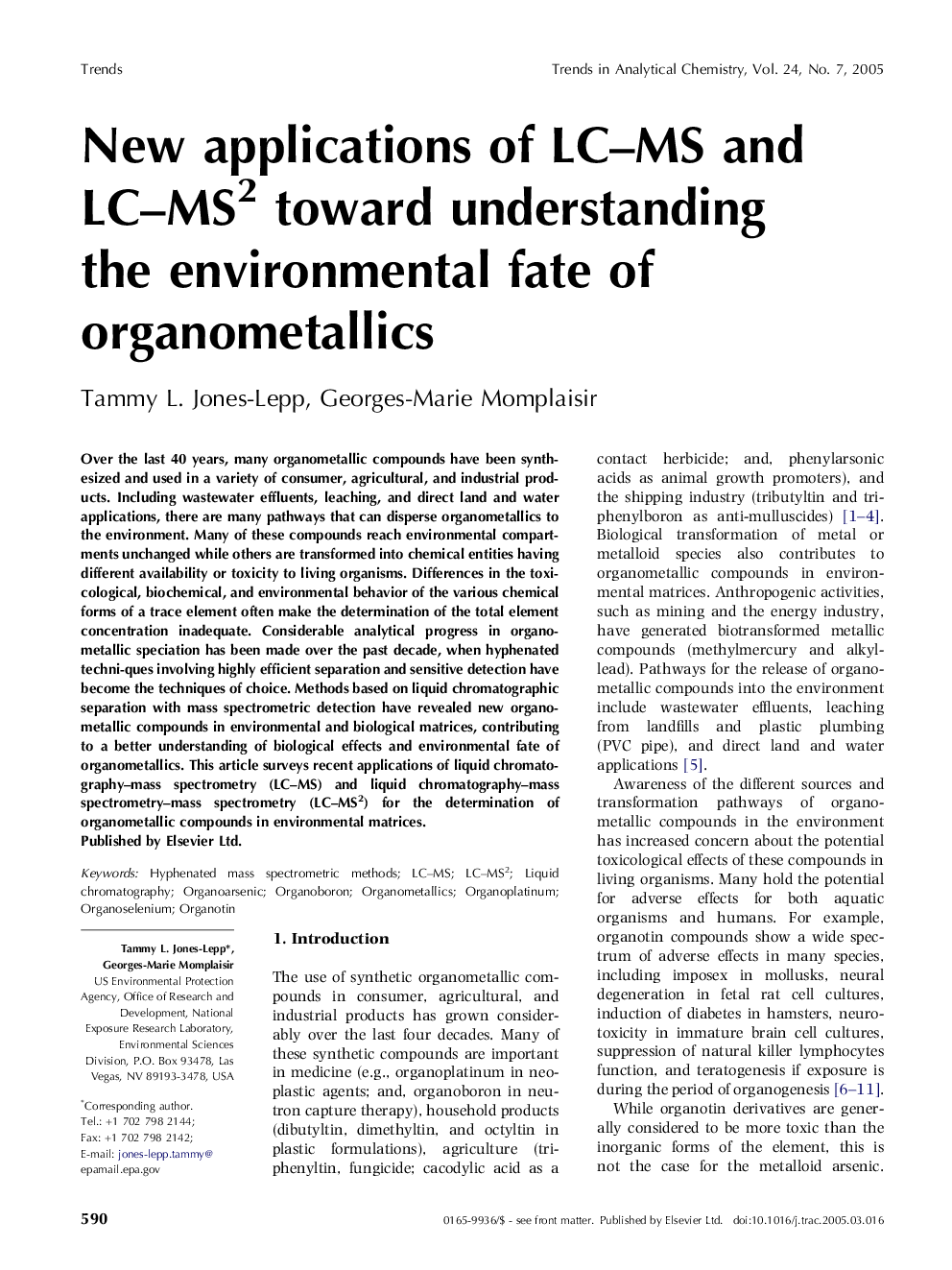| Article ID | Journal | Published Year | Pages | File Type |
|---|---|---|---|---|
| 10564381 | TrAC Trends in Analytical Chemistry | 2005 | 6 Pages |
Abstract
Over the last 40 years, many organometallic compounds have been synthesized and used in a variety of consumer, agricultural, and industrial products. Including wastewater effluents, leaching, and direct land and water applications, there are many pathways that can disperse organometallics to the environment. Many of these compounds reach environmental compartments unchanged while others are transformed into chemical entities having different availability or toxicity to living organisms. Differences in the toxicological, biochemical, and environmental behavior of the various chemical forms of a trace element often make the determination of the total element concentration inadequate. Considerable analytical progress in organometallic speciation has been made over the past decade, when hyphenated techniques involving highly efficient separation and sensitive detection have become the techniques of choice. Methods based on liquid chromatographic separation with mass spectrometric detection have revealed new organometallic compounds in environmental and biological matrices, contributing to a better understanding of biological effects and environmental fate of organometallics. This article surveys recent applications of liquid chromatography-mass spectrometry (LC-MS) and liquid chromatography-mass spectrometry-mass spectrometry (LC-MS2) for the determination of organometallic compounds in environmental matrices.
Keywords
Related Topics
Physical Sciences and Engineering
Chemistry
Analytical Chemistry
Authors
Tammy L. Jones-Lepp, Georges-Marie Momplaisir,
